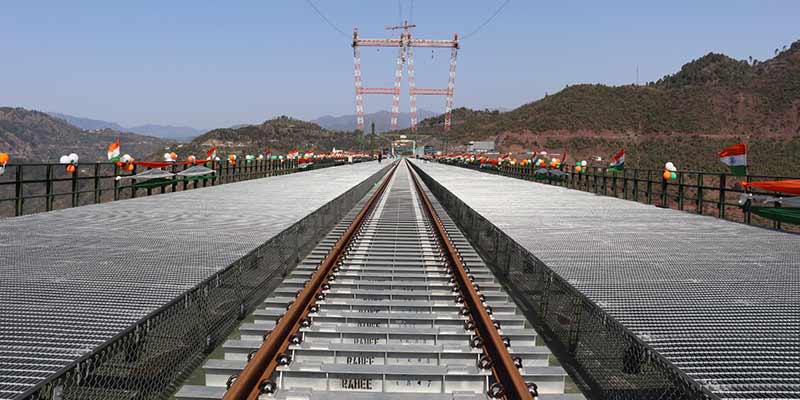By Mehmood Hussain
After depriving Jammu and Kashmir of its special status by repelling Article 370 and 35A in August 2019, the Narendra Modi-led BJP government has presented its ambitious economic and development agenda to transform the financial and infrastructure landscape, yet further consolidating its control and occupation in the occupied region.

Prime Minister Narendra Modi, who has repeatedly vowed to bring a transformative shift in the occupied region through pouring in trillions of rupees in infrastructure development and up gradation, is actually eying upon Kashmir’s complete integration with the Indian Union, extraction of its precious minerals and natural resources, consolidating military control, depriving Muslim Kashmiris of their lands and homes, and eroding the religious and cultural identity of Kashmiri Muslims.
India has introduced various laws and regulations, including the Reorganization Act, new domicile law, new industrial and spatial policy, and the delimitation Act to promulgate the Indian authority in the occupied region. These laws place Kashmir under the direct control of New Delhi while facilitating the state-owned and private entities to invest in the area, purchase land in Jammu and Kashmir, and settle non-state Hindu individuals to alter the demography of the occupied Jammu and Kashmir primarily.
Prime Minister Narendra Modi, while inaugurating various developmental projects in February 2024, announced to invest 32,000 crore Indian rupees in Jammu and Kashmir. He announced that a new era of economic transformation and infrastructure development had ushered in Jammu and Kashmir, mainly transforming the lives of residents of the region. He laid the foundation stone of the permanent campuses of IIT Bhilai, IIT Tirupati, IISER Tirupati, and IIITDM Kurnool; IIT Patna and IIT Ropar with academic and residential complexes, and two permanent campuses of Central Sanskrit University.
Besides these projects, New Delhi has substantially invested in infrastructure, energy, and mining sectors. Notable projects are Srinagar Metrolite, Reasi Railway Station, Chenab Rail Bridge, Delhi-Amritsar Katra Expressway, Jammu Metrolite, AIIMS Avantipura, Kiru Hydro Electric Project, Udhampur-Srinagar-Baramula Rail Link, Zojila Tunnel, and Jammu Ring Road with thirty townships along the route.
The track record of Indian development initiatives in Jammu and Kashmir is controversial, raising serious concerns about the intent and agenda of the Indian government to bring transformative economic and development change, uplifting the locals from abject poverty, creating jobs, and bringing security and stability to the region. India has been constructing seven new dams on the Chenab River in the Kishtwar district.
Nonetheless, the construction of dams has brought nightmares for the local communities, resulting in landslides and dispossession of lands and houses, severe change in climatic patterns due to deforestation, blasting, and massive construction activities in the area. Around 20,000 people are forced to migrate to nearby places, handing over their lands to the Indian government for a peasantry amount of around 230,000 Indian rupees, which is unable to build them a home, start a new life, ultimately pushing them into abject poverty and eliminating the chances to restart their everyday life, said Ghulam Hassan Magray, resident of Swerbatti village.
Large-scale land acquisitions are required for mega-construction projects, which India secures by force or undervalued compensation. New Delhi in Kashmir is acquiring such lands through force or underestimated compensation, resulting in leaving Kashmiris without their home, lands, and orchards, contributing to the low land for agriculture, low yield of crops, and inadequate income and employment opportunities for the large segment of the population affiliated to the agriculture for their livelihood and survival.
In addition, infrastructure projects such as dams in Kishtwar have tremendously transformed the natural ecosystem in Jammu and Kashmir, said Michael Kugelman, exposing it to frequent heat waves, floods, cloud bursting, earthquakes, air pollution, water shortage and contamination, and smog. Kashmir, once known for its heavenly beauty and dense forests, is now witnessing large-scale tree cuts and deforestation for dams, roads, railways, bridges, townships, and tunnel construction. Such transformative shifts in climatic patterns and environmental degradation have affected humans and tremendously affected other species in the region, compelling them to migrate or face the brunt of natural disasters without adequate assistance and training provided by the government.
The Indian army is instrumental in controlling the insurgency and dissident voices in Kashmir and has been the largest beneficiary of the mega development projects. The military has been struggling to control and contain the militancy in occupied Kashmir. The rigid terrain and lack of infrastructure were the main hurdles to deploying troops in the most restive areas.
Thanks to the infrastructure development in the past few years, the Indian military has now been able to deploy troops to quell anarchy and terrorism rapidly. The notable projects for rapid military deployment are the Zojila Tunnel, Z-Morh Tunnel, Chenab Railway Bridge, and Udhampur-Srinagar-Baramula Rail Link, which are seen as strategic projects to reinforce the supply line for the Indian military along the Indian borders with China and Pakistan. Prime Minister Narendra Modi, on 14th January 2025, inaugurated the 6-kilometer-long Z-Morh or Sonamarg tunnel constructed with an investment of $313 million. The tunnel’s opening will significantly improve the connectivity and deployment of the Indian troops along the India-China and India-Pakistan border.
A 35-meter taller Chenab Railway Bridge ensures India’s all-weather connectivity with the Jammu and Kashmir valley region. Declared as a matter of “national importance,” the project was announced in 2002 by then-Indian Prime Minister Attal Bihari Vajpayee; the Chenab Railway Bridge and 272 km under construction Udhampur-Srinagar-Baramula Rail Link will help India’s northern command based in Udhampur to deploy troops and maintain supply lines in Jammu and Kashmir, avoiding the inaccessibility during heavy snowfall and reducing the costs for military supplies.
The Kashmir valley, the most turbulent and inaccessible part of Jammu and Kashmir due to militancy and heavy snowfall during the winter, is now fully integrated with the rest of India to boost trade, connectivity and achieve strategic goals. Giridhar Rajagopalan, deputy managing director of Afcons, a firm completing the project, stated that the railway bridge will ensure uninterrupted transport of military personnel and equipment around the year to the border areas. The bridge will also help India exploit a strategic goal of managing any adventurism by Pakistan and China on the western and northern borders, said Shruti Pandalai, a strategic affairs expert.
The grand infrastructure development plan for Kashmir unfolded by India, of which the 42.1 km Jammu Ring Road and 30 satellite townships are the most notable yet controversial projects. Starting in May 2018, the Ring Road, built upon 4,730 Kanal land, is near completion, and the announcement of a whopping agricultural land acquisition of 1,18,000 Kanal for township development has made headlines in the Kashmir valley. Already suffering from scarce cultivable land and a steady decline in crop yields, around two-thirds of the population is nearing losing their livelihood and dignified lives due to concrete conglomerates developed in Jammu and Kashmir.
Interestingly, the government refused to compensate the landowners as per the national law and instead invoked the Jammu and Kashmir Land Acquisition Act, 1934, to deprive them of their right to fair compensation, rehabilitation, and resettlement. Each township requires an average area of 200 hectares, making a total of 6,000 hectares, which will end up the agriculture and horticulture land, raising the cost of living to maintain a decent lifestyle.
The social activists and farmers vocally disapproved of the idea of “land pooling,” introduced by the government, where the landowners will be required to voluntarily surrender land rights to the development authority to develop physical infrastructure, recreational, and public/semi-public facilities. In addition, they also raised serious questions about the residents of townships, as the prevalent financial circumstances and ethnoreligious fault lines seriously impede the chances of Muslims to reside in such townships.
Despite undertaking projects worth billions of rupees, the situation on the ground is more precarious and delicate. Some locals reported that the move would improve transport links, helping them sell their goods in the Indian markets. Ubair Shah, the owner of Kashmir’s most extensive cold storage facility in Pulwama, stated that the impact of the rail link is huge, helping traders to tap the booming Indian market. They are worried that infrastructure development can be an instrument by which the Indian government can exert control over the valley. The Indian government is propagating that the region has witnessed huge numbers of tourists, reaching 1.08 crore tourists in 2024.
Nonetheless, rising unemployment is showcasing the opposite picture. The latest periodic statistics reveal that Kashmir remains one of the poorest regions, where more than 32 percent of individuals aged 15-29 are unemployed. The quarterly unemployment data further underscores that the trillion rupee investments in infrastructure projects have failed to bring a transformative shift in unemployment patterns, as it rose to 11.8 percent in July-September 2024 from 10.2 percent in the same quarter in 2023. The scroll analysis of periodic data reported that compared to August 2019, when India revoked the special status of Jammu and Kashmir to bring economic transformation, job creation, and infrastructure development, the unemployment rate had been consistently above the national unemployment rate.
The government is also struggling with funds to control rising debt. Jammu and Kashmir has seen a staggering increase in debt. In 2019-20, the state debt was Rs 83,573 compared to Rs 1.12 lakh crore in 2022-23, increasing the debt-to-GDP ratio. The economic experts highlighted that Jammu and Kashmir’s debt-to-GDP ratio stands at 51%, underlining the difficulty of paying back its debt by comparing it with the state’s annual economic output. Such numbers raise serious questions about New Delhi’s assertion that reversing Jammu and Kashmir’s special status has ushered in the region’s new dawn of economic development.
The prevalent ground realities and factual analysis discussed in this article illuminate that despite repeated instances and promulgations, India has failed to bring transformative economic change and growth in the region. The investment of trillions of rupees in Jammu and Kashmir is not for the Indigenous citizens; it is an instrument of the Indian state to consolidate the occupation of the region, enhancing military capabilities to fight insurgency and counter Chinese and Pakistani threats along the border. The ambitious projects have entirely failed to uplift the socio-economic profile of natives, generating employment opportunities and reducing the debt-to-GDP ratio of the Jammu and Kashmir state.
Therefore, the government of India must initiate an inclusive and multifaceted development approach for citizen-centric development while diligently incorporating the ground realities and demands of Kashmiri citizens. Such an approach will bring development dividends to the people of Jammu and Kashmir.
Author: Dr. Mehmood Hussain – Director Research at the Strategic Vision Institute (SVI) Islamabad. Earlier, he was an Assistant Professor and Head of the Department of International Relations at the Women University of Azad Jammu and Kashmir and the University of Azad Jammu and Kashmir. He extensively researches China’s South Asia foreign policy, CPEC and regional connectivity, major power contention, Kashmir conflict, and human rights.







